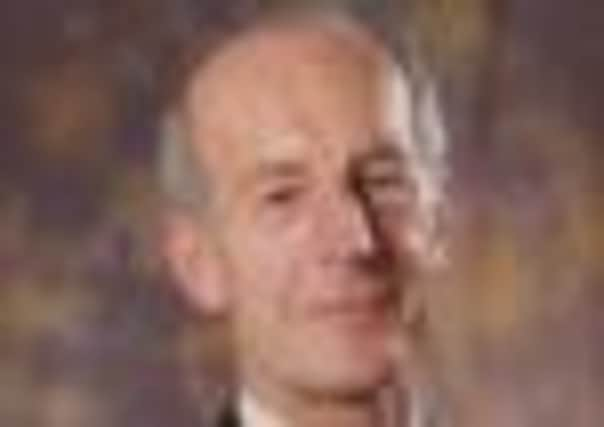Obituary: Dr Hugh C Miller BSc, FRCP, consultant cardiologist


Hugh Miller was an outstanding and greatly admired clinical cardiologist who devoted his life to the service of others.
He was born into a close-knit East Lothian farming family but chose to study Medicine at Edinburgh University, where he was awarded a first class Honours degree in Pharmacology before qualifying as a doctor in1966.
Advertisement
Hide AdAdvertisement
Hide AdHe was appointed to the pick of the junior posts at the Royal Infirmary of Edinburgh and after completing additional training posts at Duke University, Durham, North Carolina and the Brompton Hospital, London, returned to the same wards as a consultant cardiologist in 1975.
In the coming years he worked tirelessly and slowly turned the department of cardiology at the Royal Infirmary of Edinburgh into a world class unit that reflected the importance he placed on expert patient care, team work, training and teaching.
From the outset his over-riding priority was to provide the best possible service for patients. In this respect he was way ahead of his time and it is remarkable that modern clinical guidelines and documents such as the 2005 Scottish Coronary Heart Disease Strategy Action Plan recommend adopting many of the practices that he pioneered 25 years ago.
These include one stop outpatient clinics, day-case investigation and treatment units, formal protocols for procedures, safety check-lists, and regular multidisciplinary meetings.
Hugh inspired great confidence in his patients and strove to ensure that they received an early date for their appointment and had all their investigations during a single visit. The service he delivered was, needless to say, in great demand but there was no need for modern day waiting list initiatives. An enormous diary provided the means of managing the huge workload and whenever the waiting times became too long Hugh did an extra list.
He developed a special interest in arrhythmias, electrophysiology and artificial cardiac pacing and introduced many new treatments and investigations, such as radio-frequency ablation, to the Scottish Health Service.
These procedures were technically very demanding and required complex and potentially very expensive equipment.
Always conscious of the need to provide value for money, Hugh built some of the necessary equipment, with the help of in-house engineers and technicians, himself.
Advertisement
Hide AdAdvertisement
Hide AdHe also launched an appeal to raise funds for the department that brought in almost £1 million in its first few years and ensured he was able to keep the department at the cutting edge of new developments.
Like everything he did, Hugh’s research was heavily focused on the needs of his patients. He was, for example, responsible for the world’s first clinical trial of artificial heart valves.
The Edinburgh Heart Valve Trial, first published in the New England Journal of Medicine in 1991, proved to be very influential and continues to shape clinical practice throughout the world. This complex project was characteristically completed with the minimum of fuss and expense, costing a tiny fraction of similar studies.
Hugh placed great emphasis on the importance of teamwork and insisted that everyone called him by his first name. He respected and valued every member of the department and ensured that they all felt part of the team by holding weekly staff meetings.
These occasions meant that the week’s work was planned as efficiently as possible but also allowed every member of the team to make suggestions and “volunteer” for extra tasks.
Resignations and sickness rates were extraordinarily low but when people did leave Hugh would always organise an event to thank them for their contribution. When he spoke at these events he would often try to find a single word that would encapsulate the individual’s character.
It would be impossible to find such a word for Hugh but compassion, energy, enthusiasm, honesty, integrity, ingenuity, modesty, professionalism, selflessness and skilful would all be on the shortlist.
He also had the endearing habit of reinforcing advice to colleagues with one of his many catch phrases:
“Don’t be cavalier with other people’s time.”
“Do as I say, not as I do.”
Advertisement
Hide AdAdvertisement
Hide Ad“Always tell the truth, then you won’t have to remember what you said.”
Hugh was a superb and very popular teacher who taught by example. Medical students, junior doctors and many consultants benefitted from his extensive knowledge and experience but most importantly were also shown the importance of putting the patient first and adhering to the highest professional standards.
There is hardly a hospital in Scotland without a consultant who trained with Hugh Miller so we will all continue to benefit from his influence and expertise.
Hugh Miller was president of the Scottish Cardiac Society from 1995-7, a Fellow of the Royal College of Physicians, Edinburgh, and served on many important committees including the Joint Committee on Higher Medical Training.
Given his many professional achievements one might think that Hugh had no time for life outside the hospital. That would be wrong because he was a devoted husband and father and loved to be outdoors. He was an accomplished skier and enjoyed climbing, cycling, sailing and camping.
He liked to fix things at home using his “surgeon’s” hands and was a very skilled woodworker. His retirement present was a lathe, which he used to make some beautiful pieces of furniture.
Hugh was very sadly robbed of the active retirement that he had planned and deserved by head injuries sustained in a freak mountain biking accident in the Highlands seven years ago. He died of lymphoma at home on 26 February.
Hugh was a much loved husband to Isobel, Father to Jamie and Catherine and Grandpa to Fergus, Leo, Lucian and Frieda. He also leaves behind an army of grateful patients, many friends, and a formidable force of consultant cardiologists who he trained in the best possible way.
NICK BOON